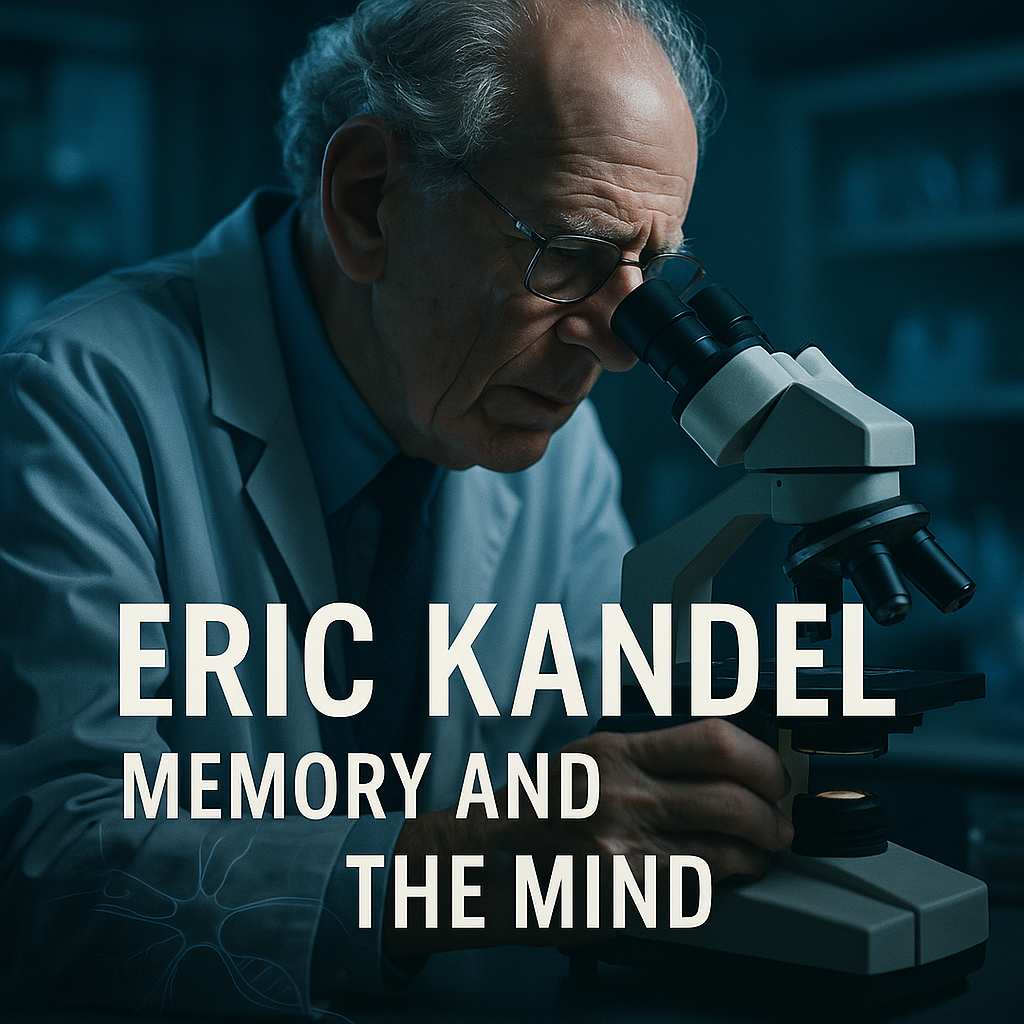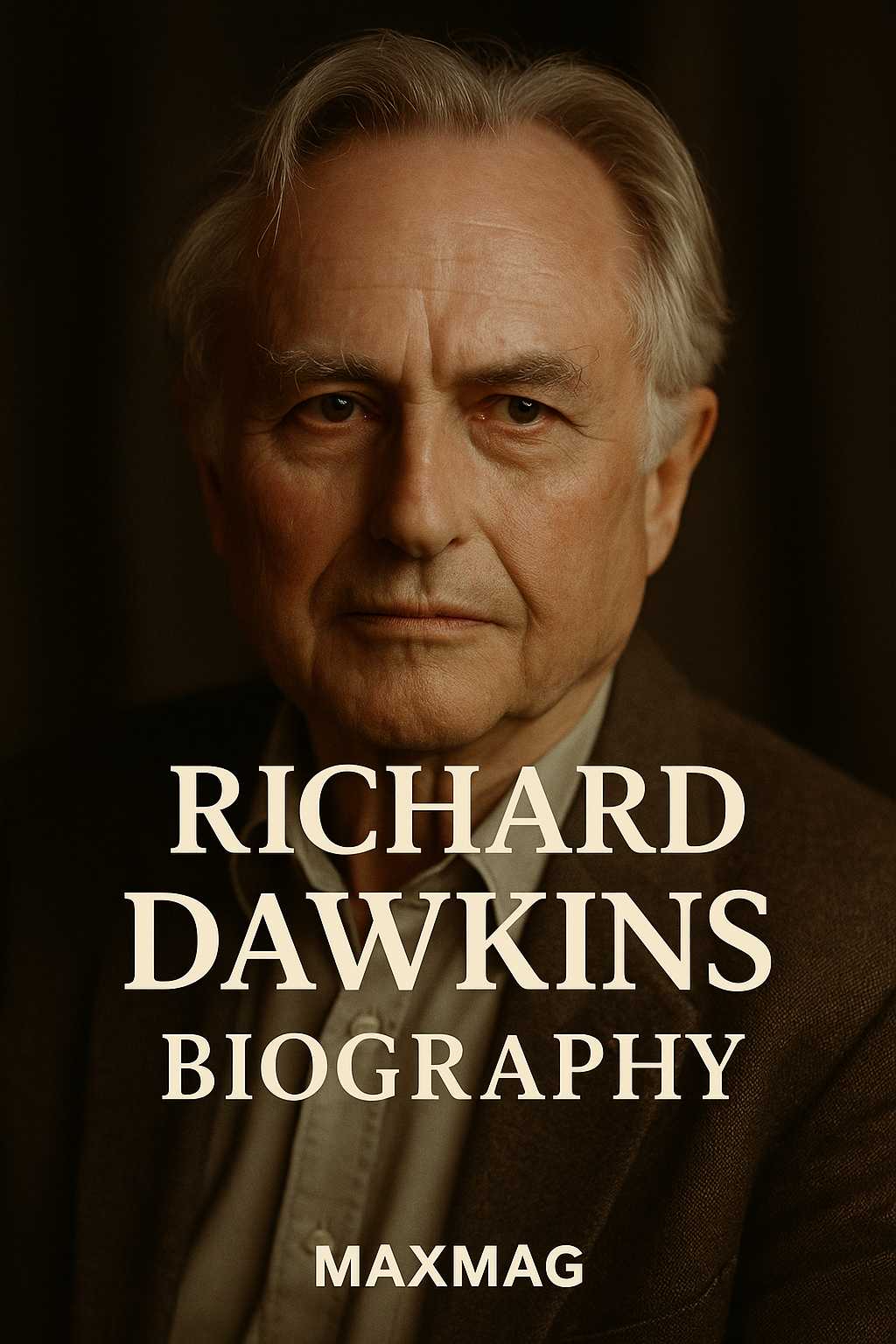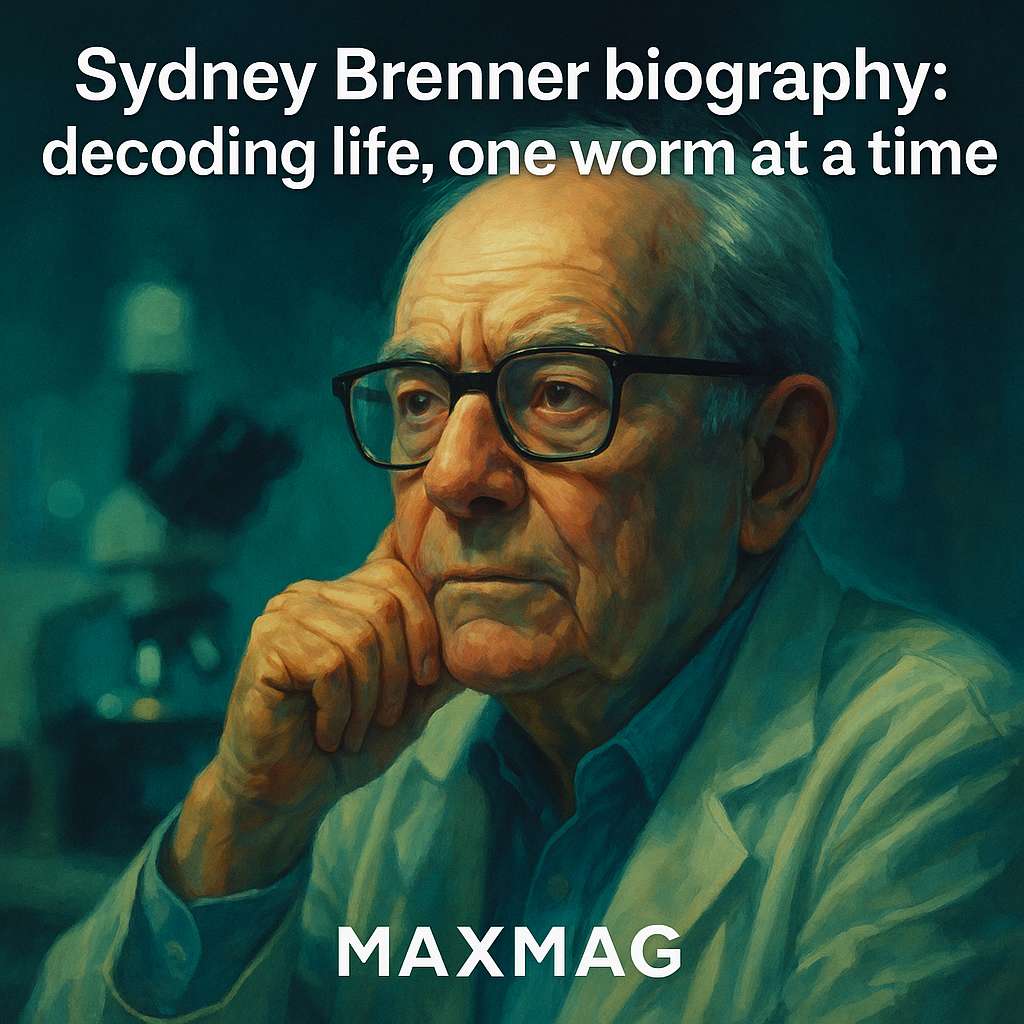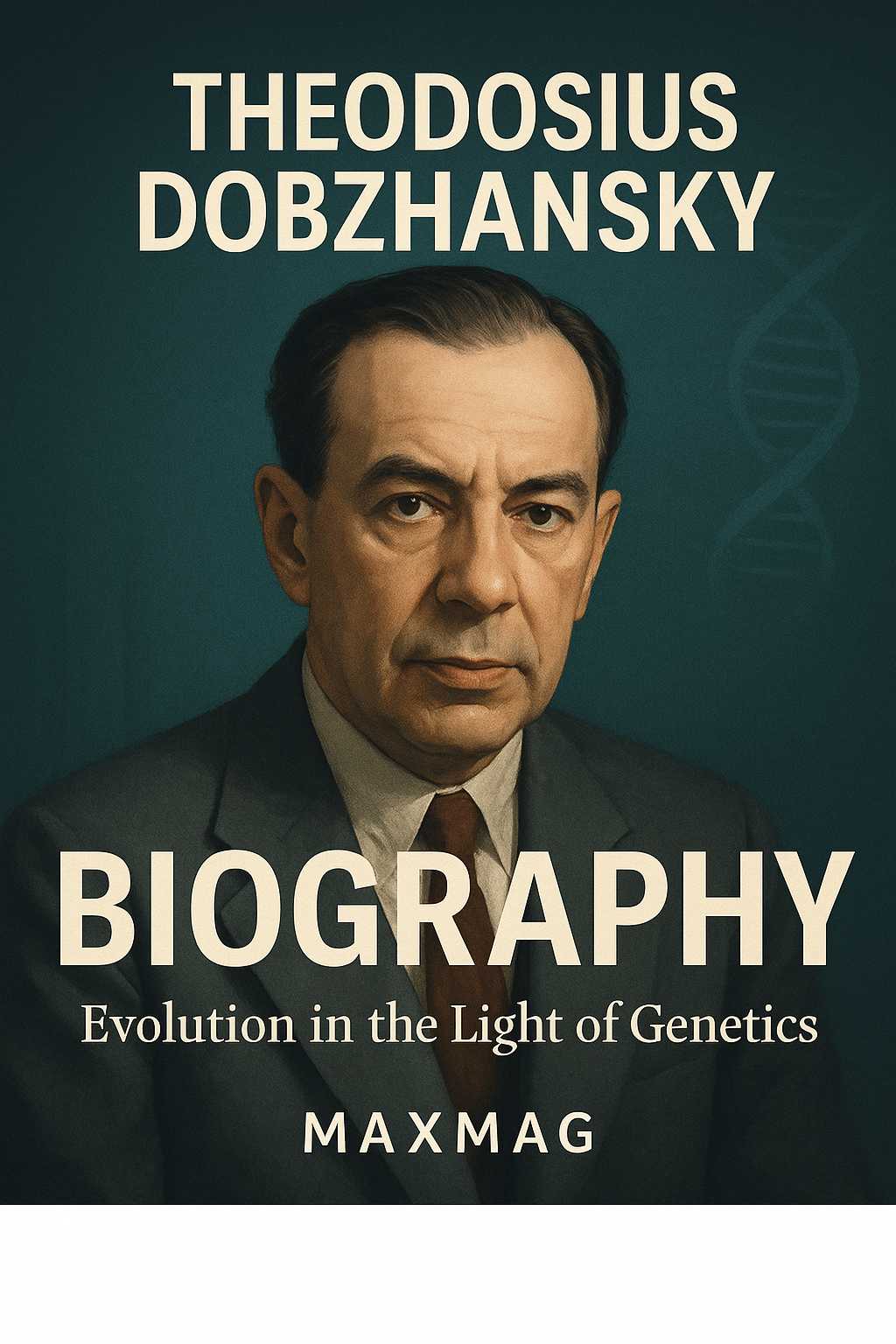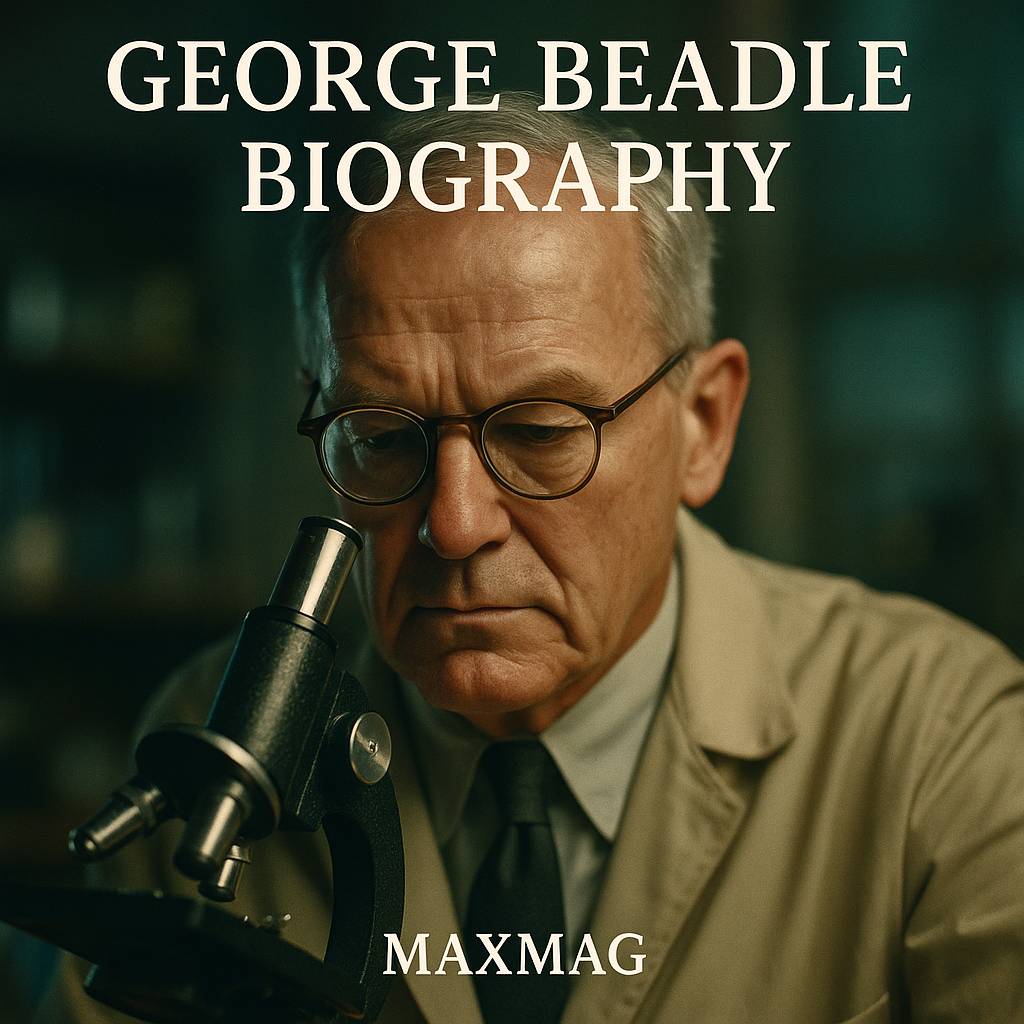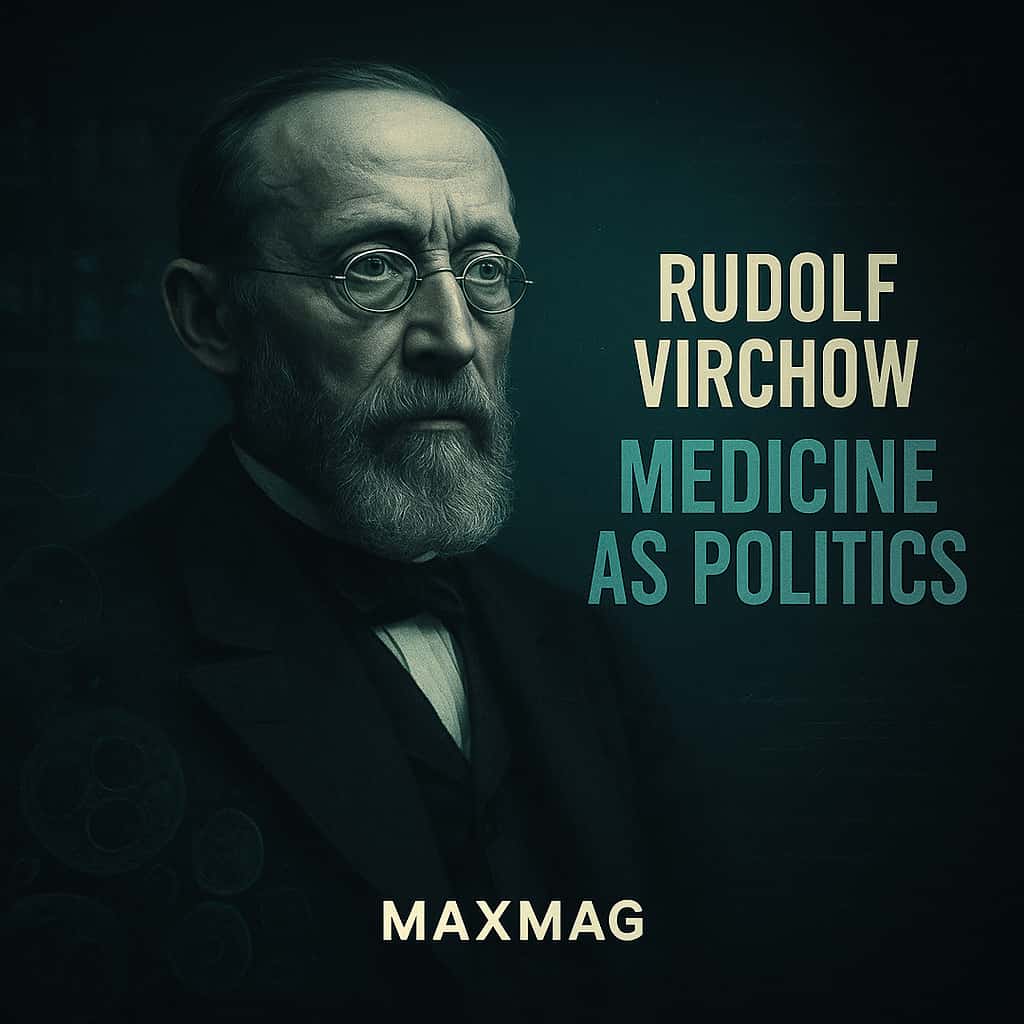
On a cold March morning in 1848, a young Prussian doctor stepped off a carriage, boots caked with mud from the villages of Upper Silesia and pockets full of notes about people who were dying. His name was Rudolf Virchow, and the report he was about to write on a raging typhus epidemic would not only change public health, it would also shape the entire Rudolf Virchow biography that historians still debate today. In his world, disease was usually blamed on bad air, divine punishment or personal weakness. Virchow returned from the epidemic convinced of something far more radical: medicine, he argued, was inseparable from politics, poverty and the smallest living units of the body itself.
Any serious Rudolf Virchow biography has to hold these two levels together: the microscope slide and the parliament floor, the quiet of the autopsy room and the noise of street revolutions. He was at once a cell theory pioneer, a pathologist who helped give birth to modern cancer research, a combative liberal politician and a relentless critic of social injustice. To understand how a 19th-century doctor came to be called both the “father of modern pathology” and the founder of social medicine is to understand how ideas about cells, cities and citizenship became intertwined.
Rudolf Virchow at a glance
- German physician, pathologist and politician (1821–1902), a central figure in 19th-century medicine.
- Key architect of cellular pathology and a major voice in the development of modern cell theory.
- Early advocate of “social medicine”, arguing that poverty and politics shape public health.
- Helped modernise Berlin’s water, sewage and meat inspection systems, leaving a lasting public health legacy.
Early Life and Education of Rudolf Virchow
Rural beginnings behind the Rudolf Virchow biography
Rudolf Ludwig Karl Virchow was born in 1821 in Schivelbein, a small town in Pomerania, then part of Prussia and now in modern-day Poland. His father was a modest butcher and farmer, his mother the daughter of a city official. It was not an obviously privileged start for a boy who would later lecture crowned heads and lecture halls. The young Virchow grew up in a landscape of fields and small workshops, where disease and death were common and unexplained, part of the rough fabric of rural life.
Quiet, observant and gifted with language, he initially imagined a life in theology, not pathology. But Prussia had a programme that offered poor but talented boys a way up: a military medical scholarship. Virchow seized it. He left his provincial town for Berlin, where he enrolled at the Friedrich Wilhelm University. In the lecture halls and dissecting rooms of the capital, the future subject of every Rudolf Virchow biography started to take shape.
From theology to cell theory pioneer
In Berlin he studied under Johannes Peter Müller, one of the era’s most respected physiologists. Müller demanded rigorous observation and rejected easy metaphysical explanations. For Virchow, who had grown up with a Lutheran pastor’s worldview, this was a turning point. Medicine, he realised, could be an exact science, grounded in what could be seen, cut, weighed and later, under the microscope, counted.
The city itself was an education. Berlin in the 1830s and 1840s was a place of overcrowded tenements, smoky factories and restless political debate. As a military medical student, Virchow dissected bodies in hospital basements by day and walked past slums at night. This double exposure—to the inner landscape of organs and the outer reality of urban poverty—would later feed directly into his social medicine, a theme that runs through any nuanced account of 19th-century medical history.
After completing his medical degree in 1843 with a thesis on rheumatism of the cornea, Virchow became an assistant at Berlin’s Charité hospital. There he began to see that autopsy tables, microscopes and hospital wards could be linked by a single question: what, exactly, happens to cells and tissues when a person becomes ill?

Rudolf Virchow biography and the Birth of His Big Ideas
The typhus epidemic that changed a career
The decisive moment came in 1847–1848, when the Prussian government sent Virchow to Upper Silesia to investigate a deadly typhus outbreak. He found villages where peasants lived crammed together, half-starved, sleeping with their animals. Doctors were few, soap and clean water even rarer. Typhus, spread by lice, flourished in these conditions. Virchow treated patients, performed autopsies and watched local officials blame the victims for “laziness” and “ignorance”.
His report pulled no punches. The epidemic, he argued, was not just a biological event, but a social catastrophe produced by inequality, lack of education and neglect. The most famous line from that report is still quoted: medicine, he wrote, is a social science, and politics is medicine on a grand scale. For a Rudolf Virchow biography, this is a key pivot: the pathologist of cells becomes a political reformer, insisting that any serious public health history must start with land reforms, schools and sewers.
That stance had consequences. Virchow supported the liberal revolutions of 1848, helped to launch a reformist medical newspaper and criticised the conservative regime in print. By 1849 he had lost his hospital post in Berlin and was effectively exiled to a new chair of pathology in Würzburg. It was a setback that turned into an opportunity: away from the capital, he had time to refine the cellular pathology theory that would make his name.
Omnis cellula e cellula – a simple, radical idea
During his years in Würzburg, Virchow immersed himself in microscopic studies. Building on the earlier work of Matthias Schleiden and Theodor Schwann, and drawing on the observations of Robert Remak, he came to a formulation that would become one of the most famous phrases in medical history: omnis cellula e cellula—every cell comes from another cell.
Today this sounds almost obvious, the kind of line you might skim past in a textbook. In mid-19th-century medicine, it was explosive. Many doctors still believed in “blastema” or in vague vital forces that could magically generate new cells from fluids. Virchow, the cell theory pioneer, insisted instead that diseases were not supernatural punishments or vague imbalances. They were specific changes in specific cells. A tumour, inflammation, scarring—each had a cellular story that could be followed under the microscope.
This cellular view of disease is at the heart of every modern pathology lab. It is also central to any serious Rudolf Virchow biography, because it connects his scientific rigour to his politics. If disease lives in cells, and if certain communities consistently suffer more disease, then something about their environment—work, housing, nutrition, sanitation—is attacking those cells.
Key Works and Major Contributions of Rudolf Virchow
Cellular Pathology and the remaking of disease
In 1856, Virchow returned to Berlin to run the new Pathological Institute at the Charité. There he turned his lectures into a book, Cellular Pathology as Based upon Physiological and Pathological Histology, published in 1858. It is the text that anchors almost every Rudolf Virchow biography and many histories of 19th-century medicine.
The book argued that all diseases, without exception, could be traced to disturbances in normal cells. Organs were no longer mysterious black boxes; they were communities of cells that could grow, die, mutate, misbehave. Virchow described cancer as arising from previously normal cells, refuted the idea that most disease began in inflamed veins and sharpened diagnostic categories by linking symptoms to visible cellular changes. For readers today, an excellent way to explore this transformation is through Harvard Library’s detailed profile of Virchow’s career, which pairs his scientific insights with their public health impact.
Cellular pathology gave doctors a common language. Instead of speaking vaguely of “dropsy” or “consumption”, they could talk about specific tissues, lesions and cell types. It is not an exaggeration to say that the entire diagnostic side of modern medicine—biopsies, blood smears, histology reports—rests in part on the foundations laid here by this pathology pioneer.
Virchow’s triad and the logic of blood clots
Another major contribution associated with Virchow is a framework for understanding thrombosis, the formation of blood clots inside vessels. Although the exact historical authorship is more complex than the neat story told in textbooks, “Virchow’s triad” has become shorthand for three factors that promote clotting: changes in blood flow, changes in the vessel wall and changes in the composition of the blood itself.
For medical students, the triad is a memory aid. For historians of medicine, it is an example of Virchow’s way of thinking: break a complex phenomenon into concrete, observable components; trace cause and effect; use that structure to prevent harm. This is the same intellectual habit that runs throughout any careful Rudolf Virchow biography: a man constantly turning messy reality into analysable parts, whether in a vein, a tenement or a parliament.
Systematic autopsy and the new medical gaze
Virchow also transformed the autopsy from a somewhat haphazard art into a systematic investigation. He developed a methodical approach: remove and examine each organ in turn, document visible abnormalities, retain tissues for microscopic analysis. This approach, still recognisable in modern autopsy rooms, was tightly linked to his cellular pathology theory.
To appreciate how revolutionary that was, imagine a time before routine post-mortem examinations, when many diagnoses were never confirmed. Virchow’s insistence on correlating symptoms with anatomical findings helped create a feedback loop between the clinic and the laboratory. It also demanded a certain moral stance: if a patient had died, the least medicine could do was to learn from that death so that the next patient might live.

Methods, Collaborations and Working Style
“Think microscopically”: a teacher’s mantra
Colleagues and students alike described Virchow as relentless in his demands for precision. In the laboratory he was reputed to walk from bench to bench, urging young doctors to “think microscopically”. It was not just a technical instruction; it was a philosophy of medical inquiry. To solve a clinical puzzle, you had to drill down from the visible to the cellular, from symptom to structure.
The list of his students reads like a who’s who of late 19th-century medicine and anthropology, including figures such as Ernst Haeckel and William Osler. These pupils carried his ideas into neurology, zoology, ethnology and beyond, spreading the influence of cellular pathology far outside the Charité’s brick walls.
A hub of journals, societies and scientific networks
Virchow also built institutions. He co-founded scientific societies and journals, among them the pathology journal later known as Virchows Archiv. The rules for publication were strict: speculative, untested or dogmatically traditional work would be rejected. For a young pathology pioneer in a conservative medical culture, controlling a journal was not just about prestige; it was a way to shape the direction of the field.
In this sense, a full Rudolf Virchow biography is also a story of networking and gatekeeping. He served on editorial boards, scientific commissions and academic committees. He lectured widely and corresponded with researchers across Europe. The same energy he poured into laboratory work and political speeches went into building what we would now call research infrastructure.
Controversies, Criticism and Misconceptions in the Rudolf Virchow biography
Credit, plagiarism and the Remak dispute
No modern portrait of Virchow can ignore the controversies. Chief among them is the accusation that he plagiarised parts of his cellular theory from Robert Remak, a neurologist and embryologist who had observed cell division earlier. Virchow initially resisted Remak’s conclusions and then, when he accepted them, some contemporaries felt he did not fully acknowledge the debt.
Historians still argue over how harsh that judgment should be. What is clear is that science is rarely a one-man show, and the Rudolf Virchow biography is no exception. His fame sometimes eclipsed the contributions of quieter colleagues. Recognising that does not erase his achievements, but it does remind us that cell theory, like most breakthroughs, emerged from a crowded and sometimes combative intellectual landscape.
Anthropology, race and the limits of a 19th-century liberal
Virchow was deeply involved in anthropology and prehistory, organising skull measurements and ethnographic surveys. On the one hand, he resisted simplistic racial hierarchies and criticised crude notions of “Aryan” superiority. On the other, his work remained trapped in the racial categories of his time, shaped by assumptions that modern scholars have dismantled.
Here, the Rudolf Virchow biography intersects with uncomfortable questions about how even progressive 19th-century scientists participated in building the very racial frameworks later used for oppression. He complicates neat labels: a liberal opponent of anti-Catholic prejudice in some settings, yet a man who organised measurements of schoolchildren’s hair and eye colour in search of “types”.
Misunderstandings about his stance on evolution and germs
Another set of misconceptions involves his stance on Charles Darwin and germ theory. Virchow was cautious, sometimes overly so, about evolutionary explanations and the new microbiology. He worried that Darwinism, if crudely applied, could justify social inequality. And he initially resisted some of Louis Pasteur and Robert Koch’s claims about specific microbes causing specific diseases.
Those hesitations have sometimes been caricatured as simple anti-science conservatism. In reality, they grew out of a methodological caution: he wanted overwhelming empirical evidence before embracing new frameworks. A balanced Rudolf Virchow biography has to hold both truths: he was a path-breaking cell theorist and, at times, a brake on other scientific revolutions.

Impact on Medicine and on Wider Society
From hospital wards to city sewers
Virchow did not stop at explaining disease; he wanted to prevent it. As a member of the Berlin City Council and later the Prussian parliament, he championed modern water and sewage systems, better housing and meat inspection. His experience with trichinosis—a parasitic disease transmitted through undercooked pork—led him to push for rigorous veterinary and slaughterhouse controls, anticipating what we now call “One Health” thinking, where human and animal diseases are seen as interconnected.
In these battles over budgets and building codes, the cell theory pioneer became a street-level reformer. He argued that you could not have healthy cells in unhealthy neighbourhoods. That idea echoes powerfully today in debates about environmental justice, air pollution and urban design.
Social medicine and today’s public health debates
Virchow’s phrase—medicine as a social science—has become a touchstone for many contemporary public health scholars. During the COVID-19 pandemic, for instance, commentators and clinicians repeatedly invoked his warnings when discussing the politicisation of masks, vaccines and lockdowns. A recent Washington Post essay on doctors and politics quoted his insistence that doctors must speak out when political decisions harm health.
For readers encountering the Rudolf Virchow biography in the 21st century, this is where the story feels startlingly modern. He understood that pathogens do not spread in a vacuum; they follow the lines of inequality. His social medicine is part of the deeper public health history that underpins modern arguments about universal healthcare, housing policy and climate change.
Personal Beliefs, Character and Private Life
A liberal in a conservative age
Politically, Virchow was a committed liberal nationalist. He believed in constitutional government, civil liberties and secular education. He co-founded the German Progressive Party and spent decades as a thorn in the side of Otto von Bismarck, opposing military spending and authoritarian measures.
The most colourful anecdote in the Rudolf Virchow biography is the so-called “sausage duel”: according to a popular story, Bismarck once challenged him to a duel, and Virchow reportedly suggested they fight with sausages, one of which would be deliberately infected with a parasite. The tale is almost certainly apocryphal, but its persistence says something about his reputation as a man who would rather wield epidemiology than a sword.
Family life and quiet routines
Behind the public figure was a large family. Virchow married Ferdinande Rosalie Mayer in 1850, and the couple had six children. Several went on to scholarly careers of their own, becoming anatomists, chemists and editors. In letters, he appears as an affectionate if sometimes distracted father, more likely to be absorbed in a manuscript or specimen than in domestic logistics.
Friends described him as brisk, humorous and possessed of a dry irony. He played the cello, collected archaeological artefacts and joined excavations, another reminder that the Rudolf Virchow biography is not just about hospitals and parliaments but also about a man who loved history, music and the physical evidence of the past.
Later Years and Final Chapter of Rudolf Virchow
Honours, influence and a long twilight
By the late 19th century, Virchow was internationally famous. He received honorary degrees, was elected to academies across Europe and in 1892 was awarded the Copley Medal of the Royal Society in London, one of science’s highest honours. Younger generations of doctors still visited his laboratory to see the master at work, even as he moved more slowly and delegated more tasks.
He also became a symbol. For some, he personified the triumph of laboratory medicine and rational diagnosis. For others, especially conservatives who resented his politics, he was an irritant. The same independence that made him a brilliant scientist made him a difficult subordinate in any political hierarchy.
An accidental fall and a final illness
In 1902, in his eighties, Virchow fell while alighting from a tram in Berlin and fractured his hip. Complications followed. His body, which had spent decades dissecting and analysing others, now became the subject of medical concern. He died later that year, leaving behind shelves of publications, a museum of pathological specimens and a city whose infrastructure bore his fingerprints.
The closing pages of any thoughtful Rudolf Virchow biography tend to return to that image: an old man, a city transformed by sewers and laboratories, and a medical world that could no longer imagine disease without cells.
The Lasting Legacy of the Rudolf Virchow biography
Why his ideas still shape clinics and controversies
Walk into a modern hospital and you are walking through Virchow’s legacy. Biopsy samples are sliced wafer-thin for histology, tumours are graded under microscopes, and clots are analysed in terms that would have felt familiar to him. The cell-based language he helped standardise is now so embedded in medical practice that it is almost invisible, part of the air clinicians breathe.
But the legacy traced in a careful Rudolf Virchow biography is not only technical. His insistence that doctors must understand poverty, housing and education as part of their work resonates strongly in debates about health inequities. When researchers show that life expectancy can vary dramatically between neighbouring districts in the same city, they are, knowingly or not, extending his social medicine.
Understanding Virchow to understand ourselves
Virchow’s story forces us to see medicine as something more than a collection of treatments and technologies. It is also a way a society decides whose suffering counts, what risks are acceptable and how much it is willing to invest in prevention. A complete Rudolf Virchow biography shows a man constantly pushing the boundaries of his own age: from bedside to autopsy table, from microscope to city hall.
In a time when debates over pandemics, climate change and health systems feel both intensely scientific and deeply political, his life offers a lens for thinking about the present. Understanding the Rudolf Virchow biography helps us see that the battles over cells and citizens, data and dignity, are not new—and that medicine, at its best, is still a social science as well as a biological one.
Frequently Asked Questions about Rudolf Virchow biography
Q1: Who was Rudolf Virchow and why is he called the father of modern pathology?
Q2: What does omnis cellula e cellula mean in the context of the Rudolf Virchow biography?
Q3: How did Rudolf Virchow connect medicine with politics and society?
Q4: What were some of Rudolf Virchow’s most important scientific contributions?
Q5: Were there controversies surrounding Rudolf Virchow’s work and reputation?
Q6: Why does the Rudolf Virchow biography matter to readers today?

